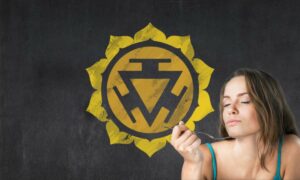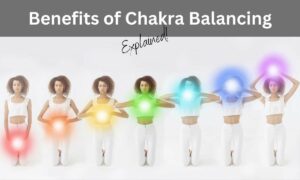The practice of Reiki is often misunderstood and shrouded in myths.
The misconceptions about the healing power of Reiki can prevent people from experiencing its many benefits.
The lack of clarity on what it really is, how it works, and who can benefit from it means that many are missing out on a powerful form of energy healing.
In this article, we will debunk the top 5 most common myths surrounding Reiki so you can make an informed decision about whether or not to give it a try.
We’ll explain why these myths are false, and provide information to help you understand the truth behind this ancient practice.
Reiki is an ancient healing practice, believed to have originated in Japan.
It involves channeling your energy and the universal life force energy through gentle touch, to reduce stress and relieve physical pain.
Often called “energy work,” Reiki focuses on clearing away energetic blockages and restoring harmony within your body.
While practitioners claim it can offer many health benefits, there is still much confusion around the practice, especially due to a lot of myths that people seem to believe about Reiki.
Hopefully, this brief explanation will help you better understand the basics behind Reiki and why some people turn to it for healing.
Myth #1: Reiki is a religion
Reiki is a spiritual practice that has been around since 1922, however, contrary to what many people think, Reiki is not a religion.
Instead, it provides practitioners with the opportunity for personal and spiritual growth as it focuses on physical and emotional wellness.
Practitioners of Reiki come from all sorts of religious backgrounds – be it Christianity, Buddhism, or something else.
Also, those who receive treatments from Reiki practitioners span different religious beliefs as well;
Therefore, no matter what your background is, you can enjoy the many benefits that Reiki has to offer.

Myth #2: Reiki involves chanting or prayer
If you’ve heard that Reiki therapy involves chanting or prayer, you may be surprised to find out that it’s not actually a necessary part of the practice as a whole.
Reiki is actually focused not on any specific words or rituals but on the transferring of energy from person to person.
Whether that’s through chants or prayer is completely up to the practitioner, who may choose to include them for purposes of comfort and reassurance.
Ultimately though, the main focus remains on energy transfer rather than technique or words used.
Recommended – What Is Heartfulness Meditation?
Myth #3: Reiki can cure physical ailments
Reiki is an age-old practice that has been used to promote relaxation and balance, but not to cure physical ailments.
While some may attest to experiencing relief from physical symptoms after engaging in Reiki, it should not be taken as a replacement for medical treatment.
As its goal is more focused on providing comfort and reducing stress as opposed to diagnosing or curing specific conditions, Reiki is best seen as an additional tool that can be integrated into existing therapeutic plans.
Myth #4: Reiki practitioners have special powers
Contrary to what might be believed, Reiki practitioners do not have special powers–they simply know how to better channel and transfer energy.
This energetic hands-on healing practice is based on the idea that vital life force energy flows through all of us, and can be manipulated to achieve healing.
This power lies within everyone, and with proper training, anyone is capable of learning how to apply Reiki correctly.
Although many believe that Reiki healers must possess some sort of mysterious ability, the truth is much simpler–Reiki healing is a learned skill that requires instruction and dedication.
With enough practice, you are sure to master the art!
Myth #5: Reiki is a new-age fad
Reiki is an ancient form of spiritual healing and not a new-age fad. In fact, it has been around for over 100 years and was first developed in Japan by Mikao Usui in the early 20th century.
It is based on traditional Buddhist and Shinto spiritual practices, making it something that rests solidly on the foundations of Japanese spirituality.
Today, Reiki is still very popular around the world, practiced by individuals seeking to alleviate stress, chronic pain, and depression.
Its supporters maintain that its healing techniques can truly help those willing to open their minds to its powers, proving once again that things are often older than they might seem.
Conclusion
Reiki is an ancient spiritual practice that has been used for over 100 years to promote relaxation, balance, and wellness.
The goal of Reiki is to help practitioners achieve physical and emotional healing, rather than diagnose and cure physical ailments.
The power of Reiki lies within everyone and with proper training, anyone can learn how to use it correctly.
There is a great deal of misunderstanding surrounding Reiki, however, by debunking these myths we can open up the possibility of experiencing its many benefits to those interested.
Reiki is a tool that can be used to encourage relaxation, reduce stress, and promote overall well-being.
It is important to do research and learn more about Reiki from credible sources before embarking on any spiritual practice.
The rich history of Reiki, its various benefits, and the correct application of its techniques can only be truly understood when one delves deeper into the subject.
In order to fully appreciate the potential of Reiki, it is important to be aware of the myths associated with this healing practice and to understand that these common misconceptions are not based in fact.
This article should give readers an insight into this powerful and ancient spiritual tool, so that they can better decide if it is the right choice for them



